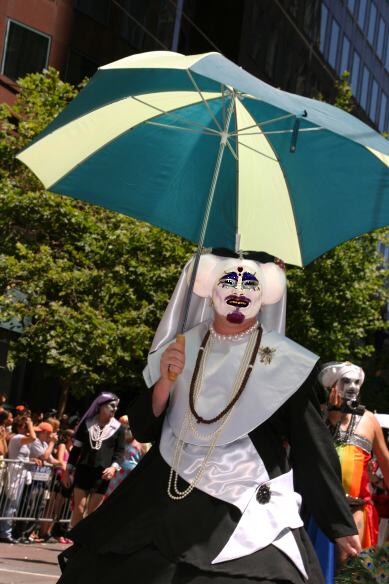Sebastiano Bado's book on the Chinchona
The Spanish Jesuit missionaries in Peru were taught the healing power of the bark by natives, between 1620 and 1630, when a Jesuit at Loxa was indebted to its use for his cure from an attack of malaria (Loxa Bark). It was used at the recommendation of the Jesuits in 1630, when the Countess of Chinchon (Cinchon; the derivative is Cinchona, the appellation selected by Carolus Linnaeus in 1742; Markham preferred Chinchona), wife of the new viceroy, who had just arrived from Europe, was taken ill with malaria at Lima. The countess was saved from death, and in thanksgiving caused large quantities of the bark to be collected. This she distributed to malaria sufferers, partly in person and partly through the Jesuits of St. Paul's College at Lima (pulvis comitissæ). She did not return to Europe and was not the first to bring the bark there or to spread its use through Spain and the rest of the continent, as stated by Markham. For the earliest transportation of the bark we must thank the Jesuit Barnabé de Cobo (1582-1657; the Cobæa plant), who rendered important services in the exploration of Mexico and Peru. In his capacity of procurator of the Peruvian province of his order, he brought the bark from Lima to Spain, and afterwards to Rome and other parts of Italy, in 1632. In the meanwhile its merits must have been ascertained both in Lima and in various parts of Europe, as Count Chinchon and his physician Juan de Vega brought it back with them in 1640.
Count Chinchon, however, troubled himself little about the use or sale of the bark. A greater distribution resulted from the large quantity brought over by the Jesuit Bartolomé Tafur, who, like Cobo, came to Spain in 1643 while procurator of the Peruvian province of his order, proceeded through France (there is an alleged cure of the young Louis XIV, when still dauphin, effected by Father Tafur by means of Peruvian bark), and thence to Italy as far as Rome.
The celebrated Jesuit theologian John de Lugo, who became a cardinal in 1643, learned about the cinchona from Tafur, and remained from 1643 until his death in 1660 its faithful advocate, zealous defender, and generous, disinterested dispenser in Italy and the rest of Europe, for which he was honoured in the appellation of pulvis cardinalis, pulvis Lugonis, and by having several portraits painted of him. De Lugo had the bark analysed by the pope's physician in ordinary, Gabriele Fonseca, who reported on it very favourably. Its distribution among the sick in Rome took place only on the advice and with the consent of the Roman doctors. The cardinal had more bark brought from America over the trade routes through Spain. Almost all the other patrons of the drug in those times appear to have been directly influenced by de Lugo; as, for instance, the lay brother Pietro Paolo Pucciarini, S. J. (1600-1661), apothecary in the Jesuit College at Rome, who undoubtedly deserves the greatest credit after de Lugo for distributing the genuine unadulterated article, and to whom are attributed the Roman directions for its use (Schedula Romana), the earliest dating at least from 1651.
In his friend Honoré Fabri, a French Jesuit, who stayed for a time in Rome, de Lugo won a determined defender of the bark against the first anticinchona pamphlet written by the Brussels doctor Jean-Jacques Chifflet. Under the pseudonym of Antimus Conygius, Fabri wrote in 1655 the first paper on cinchona published in Italy, as well as the first of the long list of brochures defending its use and the only independent article on this bark which has been issued by a Jesuit. The two Genoese, Girolamo Bardi, a priest, and Sebastiano Baldo, a physician, who were among the pioneer advocates of the plant, were intimate with the cardinal, and Baldo prefixed to his principal work a letter from de Lugo, dated 1659, on cinchona, which shows that the cardinal even when seventy-seven years old was still active in its behalf.
Circumstances created a suitable opportunity for disseminating the bark from Rome throughout Europe by means of the Jesuits. In 1646, 1650, and 1652 the delegates to the eighth, ninth, and tenth general councils of the order (three from each province) returned to their homes, taking it with them, and at the same time there is evidence of its use in the Jesuit colleges at Genoa, Lyon, Leuven, Ratisbon, etc. The remedy — connected with the name of Jesuit — very soon reached England. The English weekly Mercurius Politicus in 1658 contained in four numbers the announcement that: "The excellent powder known by the name of 'Jesuit's powder' may be obtained from several London chemists". It remains to recall the fact that even in the seventeenth and eighteenth centuries the bark kept in the Jesuit pharmacies or in their colleges was considered particularly efficacious because they were better able to provide a genuine unadulterated supply. Further, that in those two centuries Jesuit missionaries took the remedy to the malaria regions of foreign countries, even reaching the courts of Peking in China and Kyoto in Japan, where they cured the emperor by its means; that in Peru during the eighteenth century they urged American collectors to lay out new plantations; and in the nineteenth century they were the first to plant cinchona outside of South America.











 New Gonzaga student center?
New Gonzaga student center?

















